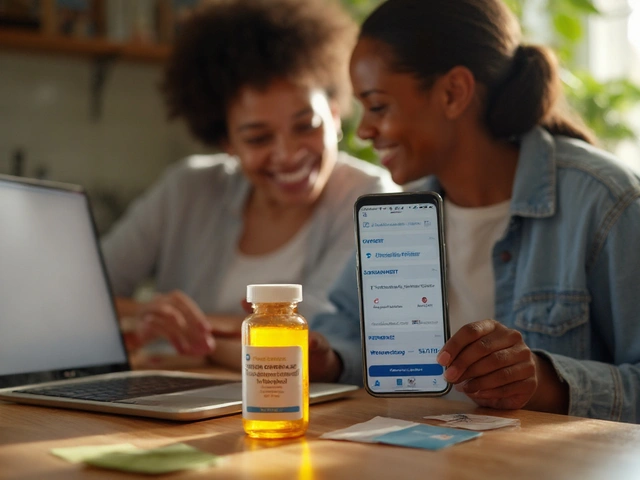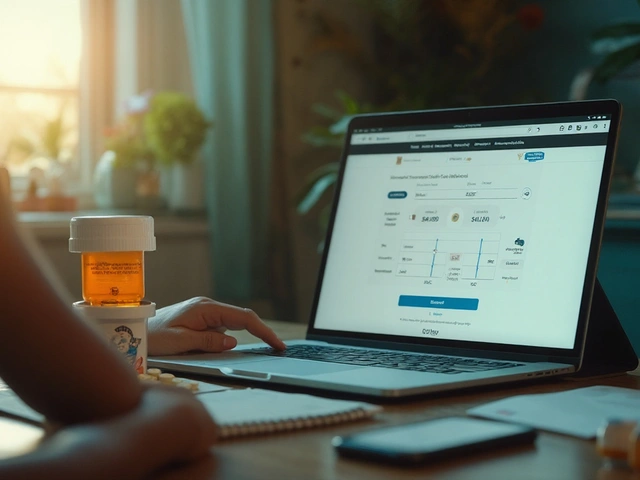Statin Substitutes: What Works and When to Use Them
If you’ve heard that statins can cause muscle pain, memory issues, or interact with other meds, you’re not alone. Many people need a cholesterol‑lowering plan but can’t tolerate a statin. The good news is there are several safe and proven alternatives. Below we break down the most common prescription swaps, plus lifestyle tricks and over‑the‑counter choices that actually move the needle.
Top Prescription Alternatives
Ezetimibe blocks cholesterol absorption in the gut. It’s often added to a low‑dose statin, but it can stand alone for people who can’t take any statin at all. The pill is cheap, taken once a day, and usually causes only mild stomach upset.
PCSK9 inhibitors (like evolocumab and alirocumab) are injectable meds that dramatically lower LDL. They’re pricey, so insurance approval can be a hurdle, but for high‑risk patients they’re a game‑changer. Most users report no flu‑like symptoms and an easy injection schedule.
Bile‑acid sequestrants such as cholestyramine, colesevelam, and colestipol bind bile acids in the intestine, forcing the liver to use more cholesterol to make new bile. They lower LDL by about 15‑20%. The main downside is gritty texture and possible constipation, so taking them with plenty of water helps.
Fibrates (gemfibrozil, fenofibrate) target triglycerides and can raise HDL a bit. They’re a solid pick when high triglycerides are the bigger problem. Watch for kidney issues, especially if you’re already on a statin.
Niacin (nicotinic acid) raises HDL and lowers LDL, but the flushing can be uncomfortable. A low‑dose, extended‑release version reduces the heat you feel. Talk to a doctor first because niacin can affect blood sugar.
Lifestyle and Over‑the‑Counter Options
Prescription drugs are powerful, but diet and habits still matter. Swap out saturated fats for healthier oils, eat more soluble fiber (oats, beans, apples), and add a handful of nuts daily. Those moves alone can shave 5‑10 % off LDL.
Supplements like red yeast rice contain a natural form of lovastatin. They work for mild cholesterol bumps, but the amount of active ingredient varies, so quality matters. Look for a product that’s tested for potency and free of contaminants.
Plant sterols and stanols, added to spreads or fortified yogurts, block cholesterol absorption. A couple of grams a day can lower LDL by up to 10 % without side effects.
Exercise isn’t a quick fix, but regular activity (30 minutes brisk walk most days) improves overall lipid profile and helps keep weight in check. Pair it with stress‑relief practices like deep breathing or short meditation for a heart‑healthy boost.
When trying a new statin substitute, start low and titrate up. Keep an eye on blood work every few months and note any muscle aches or digestive changes. If something feels off, reach out to your doctor right away. The right mix of meds and lifestyle tweaks can keep cholesterol down and you feeling good without the downsides of a statin.
In 2025, new treatments for managing high cholesterol have emerged as viable alternatives to Rosuvastatin. These options present various advantages and considerations, catering to different patient needs and health conditions. From bile acid sequestrants like Colesevelam to natural supplements gaining popularity, each choice comes with its unique benefits. This article explores these alternatives, offering insights into their pros and cons to help patients and healthcare providers make informed decisions.
Continue reading





